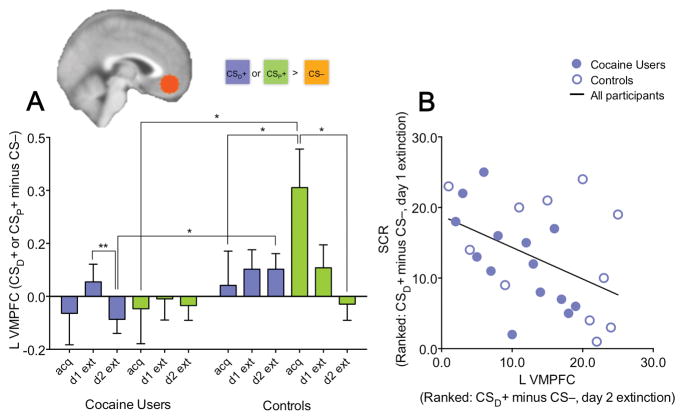Figure 2.
Modulation of left VMPFC activation by learning phase is valence-specific and correlates with psychophysiological response to the conditioned stimulus (CSD+) paired with a drug cue. (A) Plot shows left VMPFC activation for each learning phase (acquisition, day 1 extinction, day 2 extinction) as a function of cue-type [CSD+ (cue paired with drug-related image) and CSP+ (cue paired with pleasant image), both relative to the CS− (cue paired with neutral image)] and diagnostic group (cocaine users, controls). There was a 3-way interaction such that left VMPFC activation decreased in response to the CSP+ but increased in response to the CSD+ with extinction training in controls but not cocaine-addicted participants. (B) Left VMPFC activation on day 2 extinction correlated with the success of day 1 extinction as indexed by reductions in skin conductance response (SCR) to the CSD+ relative to the CS− across subjects, pointing to a role of this region in the recall of extinction learning. The overall pattern of results in the right VMPFC, as well as the correlation between right VMPFC activation and SCR, was similar albeit weaker (see Results). +P≤0.10, *P≤0.05, **P≤0.01.
See also Figures S3–S5 and Tables S1–S2.

